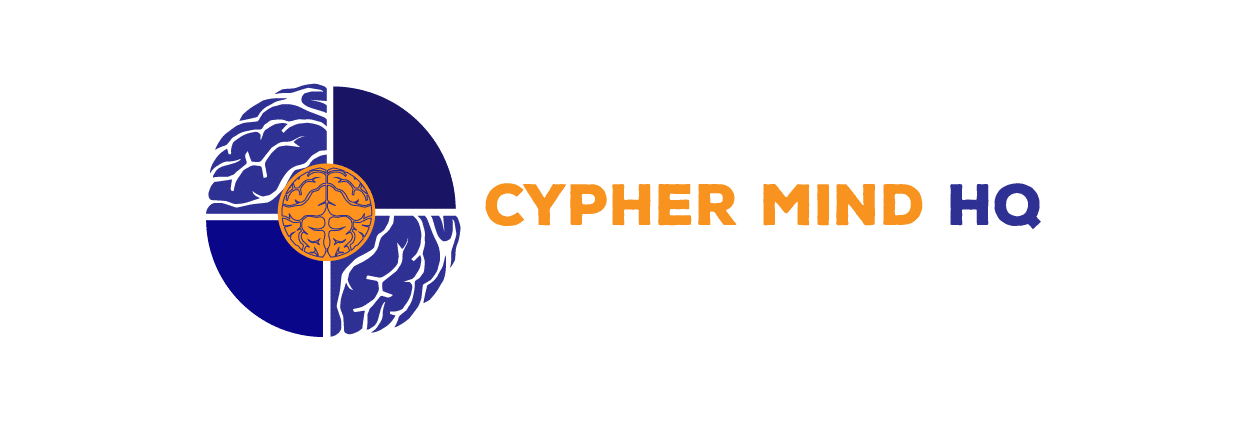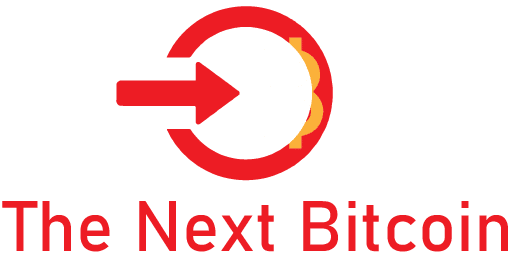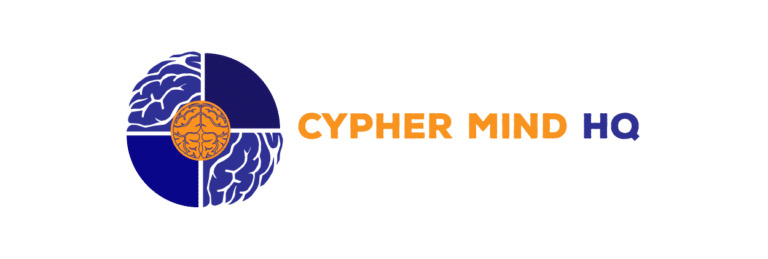Introduction
With the introduction of blockchain, the world has come across several new terminologies, such as cryptocurrencies, altcoins, DeFi, fungibility, etc. One of the most talked about concepts that rose to international popularity following Bitcoin’s debut is Web 3.0.
Anyone who is connected with Twitter or other social media platforms has heard about Web 3.0. This article will shed light on the meanings, history, and features of Web 3.0. At the same time, it would also dive into how and why Web 3.0 is connected to the blockchain ecosystem.
What is Web 3.0?
(Advertisement)
CypherMind-HQ.com Artificial Intelligence Crypto Trading System – Get Ahead of the Curve with this sophisticated AI system! Harness the power of advanced algorithms and level up your crypto trading game with CypherMindHQ. Learn more today!
Web 3.0, as visible by its name, is not a new invention but rather an evolved form of an already existing technology. This technology was once shrouded in obscurity and speculation, but now every modern human being cannot imagine their life without it. The hyped-up technology is none other than the internet.
In the current day and age, it is impossible for a modern human being to enjoy a good quality of life without using the internet. The Internet has connected the masses to the world and places in other corners of the world. The Internet has also given rise to eCommerce and brought a trade and economic revolution in the world.
However, the internet we see today was not always as advanced as its current rendition. Web 3.0 is the form of the internet that is the next stage in evolution for the internet.
How does Web 3.0 Work?
It is important to understand that, at present, Web 3.0 is a theoretical concept. However, with the recent evolution and advancement of the internet, the transition to the next stage has become even so more probable.
The story of the internet starts with Web 1.0 interfaces. When the internet started, it was present as only read-only websites. It meant that people were able to create and share static web pages.
However, with time the programming for the World Wide Web improved, and it transitioned into the next stage called Web 2.0.
Web 2.0 gave the ability to the masses to not only view websites but also interact with them. In this manner, people were able to add comments, create personalized accounts, upload media files, and perform actions like downloading or uploading, etc.
With the introduction of Web 2.0, sites like social media and eCommerce platforms started to gain more popularity. People were able to purchase from remote merchants in the other part of the world.
At the same time, they were able to share ideas and thoughts and interact with other users on the internet much faster.
However, Web 2.0 lacks in certain aspects, such as granting full autonomy to the end users. The incidents like Facebook Papers and other whistle-blowing reports have revealed how users are under the palm of big tech companies. Social media sites collect data from their users, and they sell this data to marketing companies.
Social media sites can promote violence and biased political outlooks and affect their users on a psychological level. This all happens because the consumers have little to no control over their data and internet presence.
The theoretical concept of Web 3.0 is a place where the individual user would have greater or complete control over their online presence. The users on Web 3.0 could exist as independent entities, and they will be able to pick and choose what information they share with others.
The users of Web 3.0 would also be able to manage their privacy better than before. Web 3.0 users will have the ability to operate under an assumed name on the internet, and they will not need to provide their personal information to others at their discretion for making payments or any other capacity.
Origin of Web 3.0
The concept of Web 3.0 is attributed to the inventor of the Internet, computer scientist Tim Berners-Lee. He is the man behind the internet who worked at CERN laboratories in Europe and wrote the 9555 lines code that was later adopted as the World Wide Web or WWW today.
He shared the idea of a “Semantic Web” in 1999, stating that he envisions a web where individual computers can process all the information available on a topic at once. He noted that this new web would have the ability to record and process online transactions between people and computing units.
His version of Web 3.0 will be able to transform daily interactions, trade, bureaucracy, and interactions. He mentioned that daily interactions would become fully automated with Web 3.0.
Berners-Lee used the word Semantic Web for his conception of the next phase of the internet. However, the term Web 3.0 was first coined by Ethereum co-founder Gavin Wood in 2014. He is also the founder of another blockchain project called Polkadot. This term was then borrowed by Facebook CEO Mark Zuckerberg.
The CEO of the social media network made it popular by rebranding the company under the name of Meta. Other tech giants such as Microsoft has also adopted Web 3.0 project as a way to evolve their global office tools such as MS office and others.
Positive Reviews About Web 3.0
Whenever there is a new technology in the world, it becomes a hot topic of discussion among the masses. In the age of social media, more people tend to participate in such debates related to Web 3.0.
When it comes to the adoption and different aspects of this online entity, netizens are divided in their opinions. To remain objective, we shall examine both positive and negative remarks related to Web 3.0. Let us first get started by examining the positive reviews and opinions connected to Web 3.0:
The founder of the Internet, Tim Berners-Lee has talked about an independent and decentralized internet for a long time. His idea of the Semantic Web may not fit the model with precision for the current Web 3.0 ideologies.
However, he is an important figure in the world of tech and has been working on Solid Project to realize his vision of the next generation of the web.
Ethereum co-founder Gavin Wood has played an important role in shaping the current rendition of Web 3.0. When he coined the term, he was referring to the decentralized network that is based on the blockchain and Distributed Ledger Technology or DLT.
Due to his contributions, the cryptocurrency community online has hopped onto the Web 3.0 bandwagon and helped it transform into a drawing-room conversation.
Venture Capital firms are always on the lookout for the next big Tech unicorn. The popular Venture Capital firm named Andreessen Horowitz recognizes the potential application of Web 3.0 and has proceeded to campaign for its legal conduction in Washington D.C.
The efforts of the VC involve creating legal viability for regulation and policy-making around Web 3.0.
An article published in New York Times in 2021, suggests that investors are flocking around Web 3.0 applications with an estimated seed capital of $27 billion to become an early stakeholder in the future of the internet.
Social media platforms such as Reddit and Discord are Web 2.0 at their base. However, both these platforms have made attempts to ingrain some features of Web 3.0 on their main forums.
The CEO of Discord, Jason Citron, took the Web 3.0 features off the network following some negative feedback and backlash from their users.
Negative Reviews Surrounding Web 3.0
There is no shortage of negative connotations and discouraging remarks connected to Web 3.0. Here are some of the most talked about bad reviews:
Tesla and SpaceX CEO Elon Musk has claimed that Web 3.0 is more of a buzzword than reality at present. His remarks suggest that there are no true Web 3.0 applications present in the world.
James Grimmelmann hailing from Cornell University’s research department, has compared Web 3.0 to vaporware in his 2021 review. Vaporware is a type of computer program that has made its public debut but has been delayed or never issued with all its features.
He also pointed out that moving the current internet to blockchain could result in greater data collection than at present.
The Signal is a social media application; its creator Moxie Marlinspike has issued his concerns that the current web 3.0 applications are far from being as decentralized as needed. He pointed out that the current iteration of Web 3.0 is under the control of private tech companies such as Alchemy, OpenSea, MetaMask, and Infura.
He also claimed that people are dependent largely on cryptocurrency exchanges and stablecoins like Tether. He further noted that the current Web 3.0 is virtually indistinguishable from the old one.
International media outlet Ad Age published an article in 2022 where it notes that Web 3.0 is a struggle to create a new web platform that can solve the issues of the former internet. However, if the old gatekeepers of Web 2.0 were allowed to be in charge of Web 3.0, nothing would change for the end users.
Nowhere founder Ana Constantino has claimed that the Web 3.0 claimant applications like Meta and Decentraland can lock the public out of private zones on account of having ownership of the virtual real estate and other online forums. The new web is by design as inclusive, interactive, or transparent as the existing one.
Salient Features of Web 3.0
Despite getting a rough definition from several sources, it is not clear to most people what Web 3.0 is. The fact of the matter is that, at present, several ideas and theories paint a fantastical picture of how the internet of the future should look like.
In reality, the presence and creation of Web 3.0 are still underway. Most tech experts agree that Web 3.0 has not materialized into reality thus far. However, some tech moguls believe that Web 3.0 is already here and ready for public usage.
To get a clear picture of Web 3.0, the reader must take into consideration its most essential components, listed as under:
Semantic Outlook
The current technology and the internet still have ways to go before they can fully master the Semantic Outlook as clearly as human beings. It is visible in the applications of today that they are unable to interpret the human language as distinctly as other human beings.
The best search engines may find it difficult to detect the tone of sarcasm or fully comprehend adages that normal humans can easily recognize. The internet of the future should be able to overcome this hurdle for technology to enable its greater integration with daily life activities better than Web 2.0.
Blockchain and DeFi
The concept of Web 3.0 formulated by Gavin Wood consisted of a future internet where users can enjoy true decentralization and data ownership. At the same time, he also imagined a Web 3.0 that was an autonomous internet economy.
However, most of the blockchains and cryptocurrency projects do not fulfill his criteria. Many developers are working to achieve the perfect blockchain formula that enables decentralized identity and transparent yet pseudonymous online transactions for their users.
3D Interfaces and Interaction
The iteration of Meta and Microsoft for a Web 3.0 universe is where social media platforms and workplaces are wholly digitized and on the cloud. Interestingly, these applications aspire to grant their users the ability to interact in a 3D environment with 3D avatars.
It is a natural course of advancement for Web 3.0 that should be able to make 3D UIs and UXs more popular and mainstream than ever before with the added advantages of all the Web 2.0 features.
Artificial Intelligence and Machine Learning
Just like Internet has forever changed the everyday life structure for the masses, in the same manner, AI and Machine Learning programs are going to change internet users. To some extent, AI has started to seep into all parts of the internet in the form of customer services bots and automated email responses, etc.
Therefore, the internet of the future may be fully immersed with AI and smart machine learning models that remove the need for human input in the capacity of data feeders and writers, etc. However, popular AI bots like ChatGPT, LaMDA, and Stablecog are currently surrounded by controversy.
Role of Crypto and Blockchain in Web 3.0
It is no wonder that many people see blockchain as the stepping stone to achieving Web 3.0. The Web 3.0 Ideology of Gavin Wood closely tracks several features of blockchain as Web 3.0 requirements.
Therefore, many cryptocurrency users seem to hear the term Web 3.0 applications time and again in their surroundings. Some innovations connected to blockchains, such as DAOs or Decentralized Autonomous Organizations, are often touted as part and parcel of Web 3.0 stemming from blockchain technology.
It is important to note that many tech figures believe that Web 3.0 is still underway and needs more time to fully realize. DAOs are internet entities that are owned and operated by their members, and all the decisions on DAOs are made through the voting system.
However, there are some concerns regarding policymaking, regulations, and neutrality connected to DAOs.
Some people also consider NFTs as a Web 3.0 product to birth out of the blockchain networks. It is due to the ability of an NFT to secure exclusive ownership of an online place or entity.
Users can claim their ownership over gaming characters, skins, media files, virtual real estate, and other objects using NFTs. But the current NFTs are unable to stop other users from viewing or accessing a media file without buying in.
Furthermore, the NFTs only consist of smart contracts, and they do not hold any real legal ownership contractual obligation over buyers, viewers, holders, and sellers. Therefore, NFTs have not yet seeped into the public sector as a means to buy and sell online entities.
At the same time, many IT professionals do not agree with the Web 3.0 extension of blockchain. The founder of the web, Tim Berners-Lee has issued a statement recently claiming that his vision of a Semantic Web does not require blockchain integration.
His Semantic Web program called Project Solid consists of decentralized stores called pods for data storage. These pods can be hosted anywhere rather than on a dedicated server, depending on the requirement of the user. The users will have control over which applications on the pods can access their data.
Whereas, there are some aspects of blockchain, such as interoperability, DLT, decentralization, and self-custodial wallets, that resemble his vision of the Semantic web and resonate with the Web 3.0 envisaged by Gavin Wood.
Advantages and Limitations of Web 3.0
Web 3.0 could grant people complete autonomy over their data and financial privacy. However, it may also spark the conversation about regulatory requirements and implementations. Web 3.0 may grant greater personal independence to the users, but it also raises the question about containing the spread of immoral or illegal practices online.
With Web 2.0, users are regulated and sanctioned as per a social code of conduct, and they are bound by international and national laws to keep them away from financial or legal transgressions. When every user has full autonomy over their online presence, it could be difficult to bind them within the rules of a community.
It could be very difficult for law enforcement agencies and other regulators to maintain peace and monitor illicit activities on Web 3.0.
Conclusion
Web 3.0 is a highly anticipated rendition of the existing internet. Whenever new technology arrives, it is accompanied by new questions, queries, and curiosities. It takes time for the masses to adjust to this new technology and learn to implement it in the best possible manner.
It is impossible to ignore the benefits of Web 3.0, but at the same time, the end users must make sure that they are participating in a project that protects their interests and acts as an advantage over its older version.



